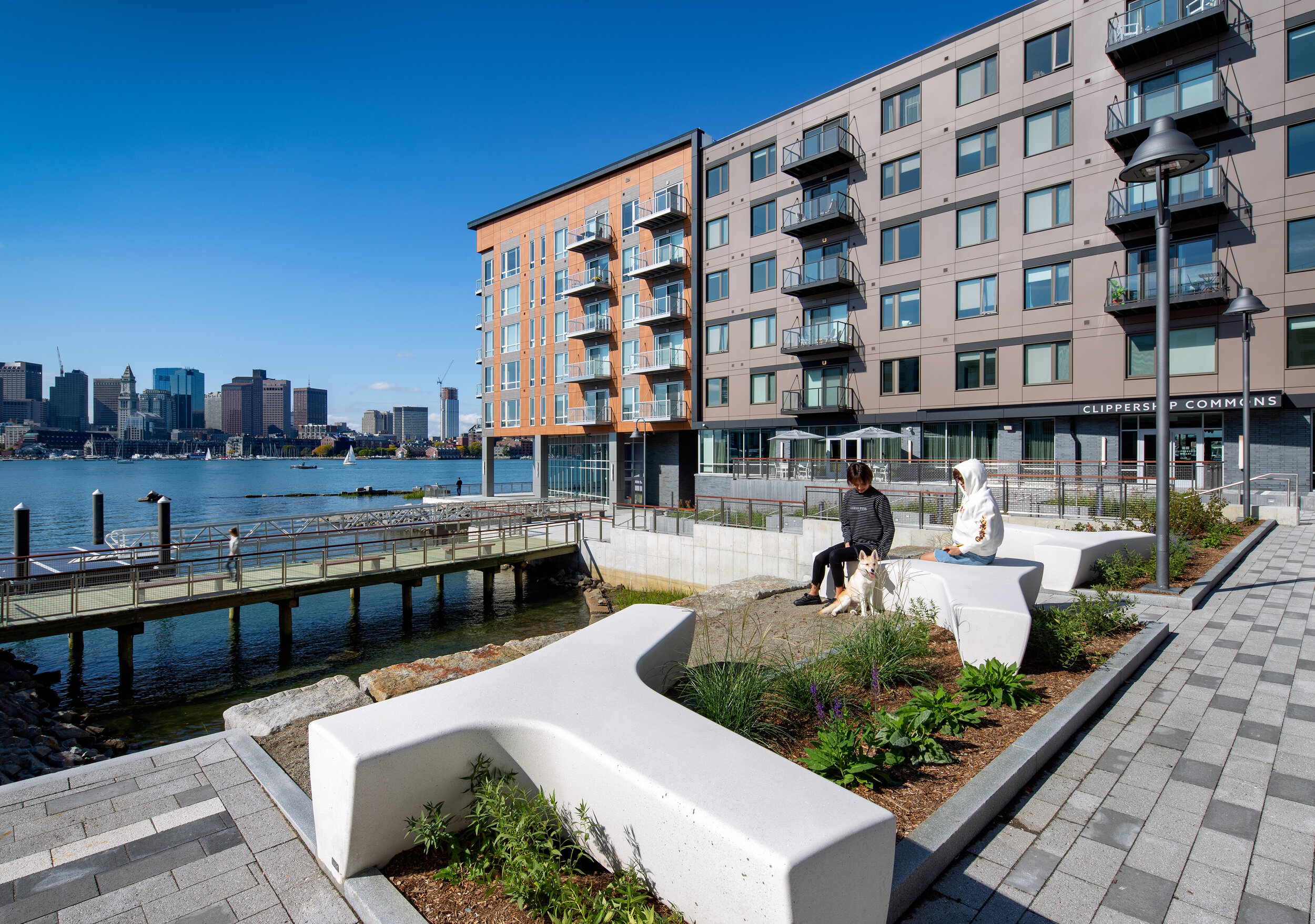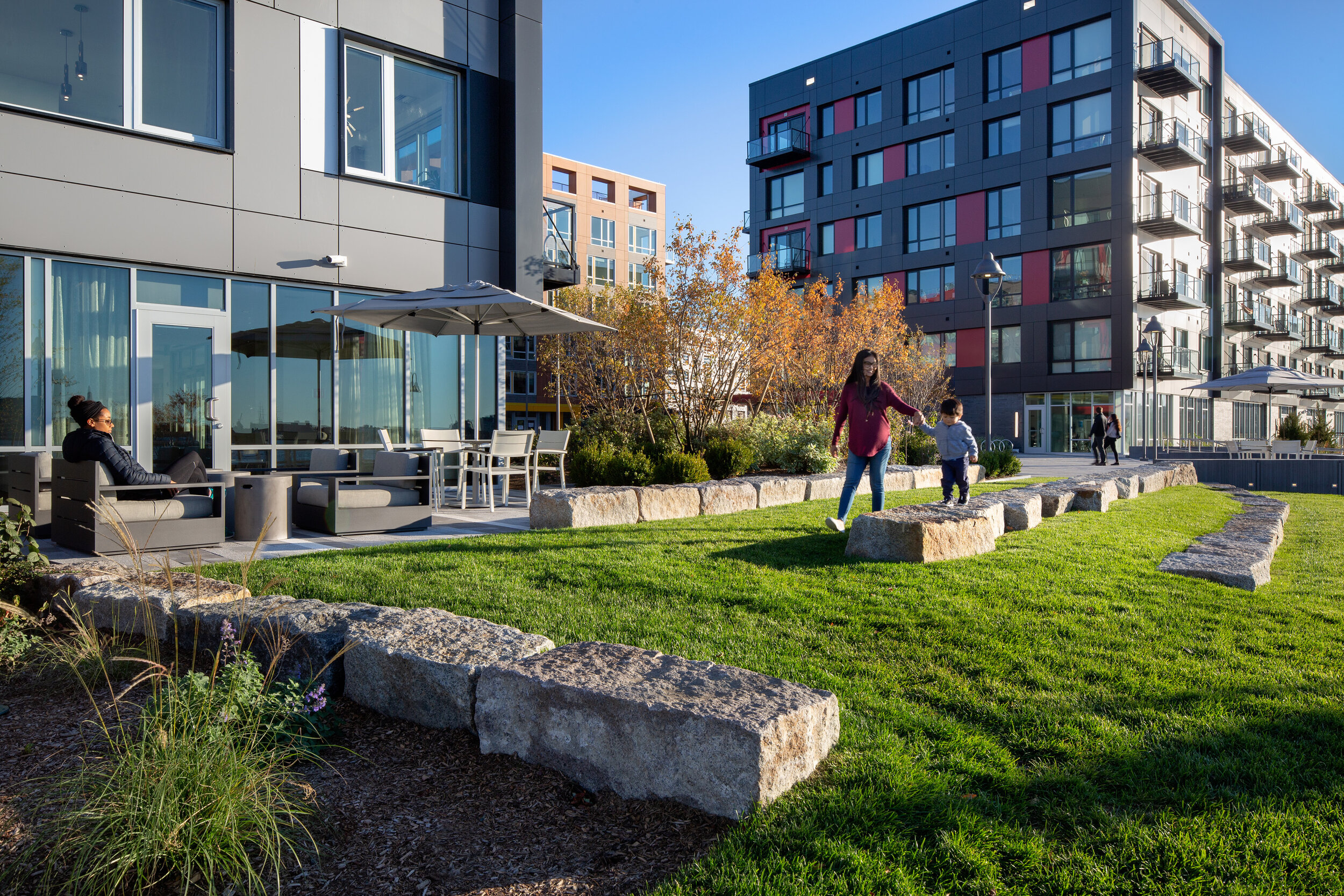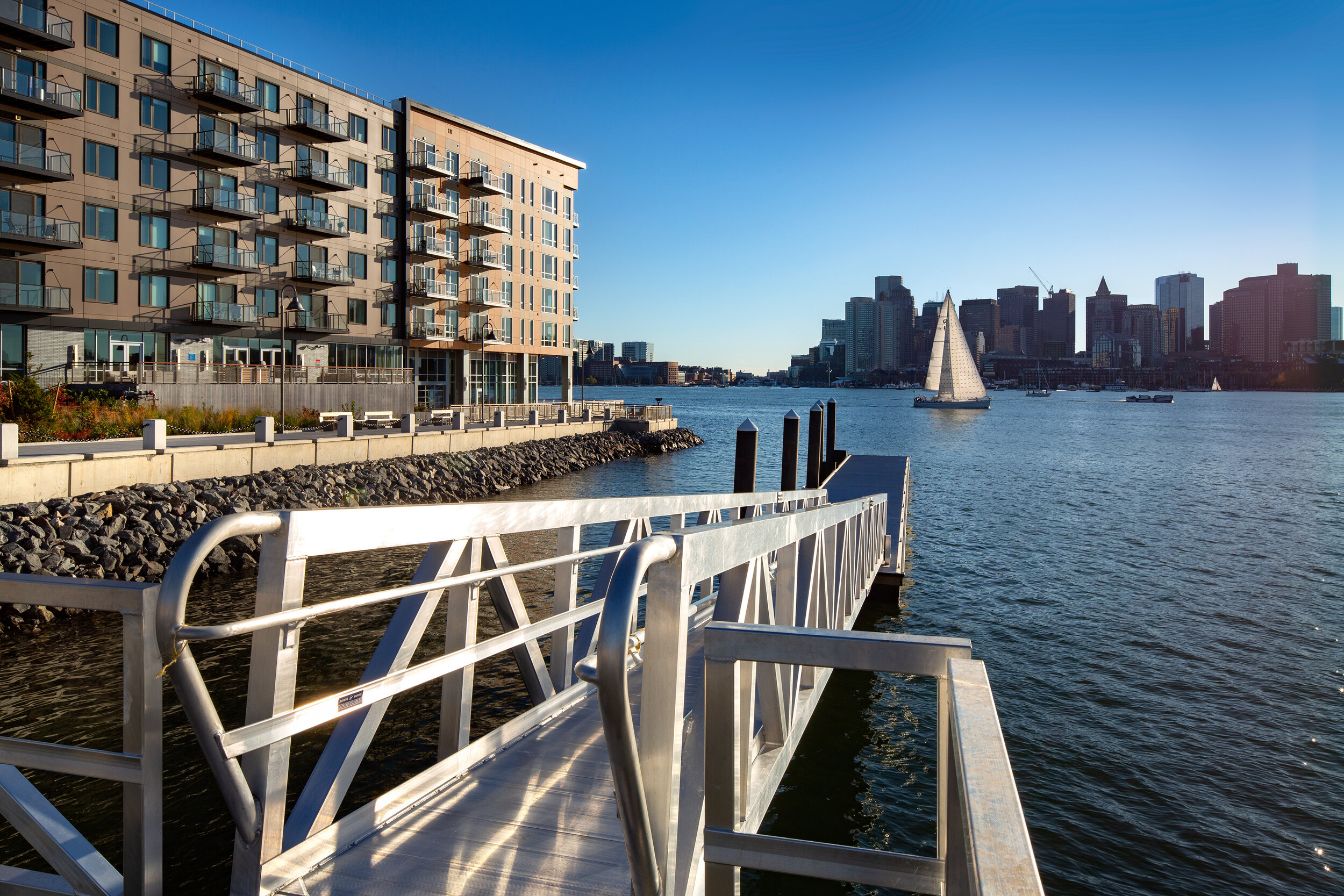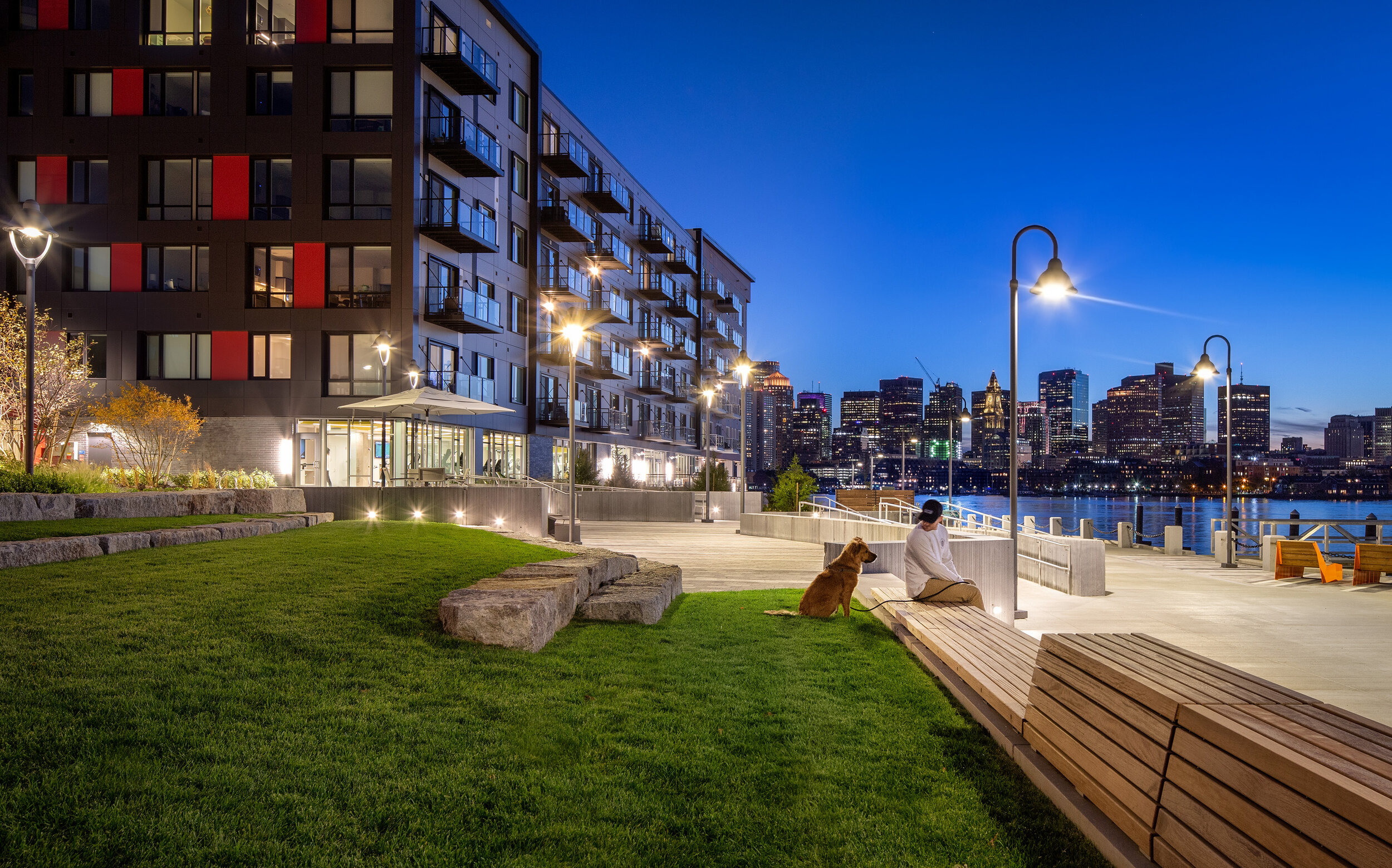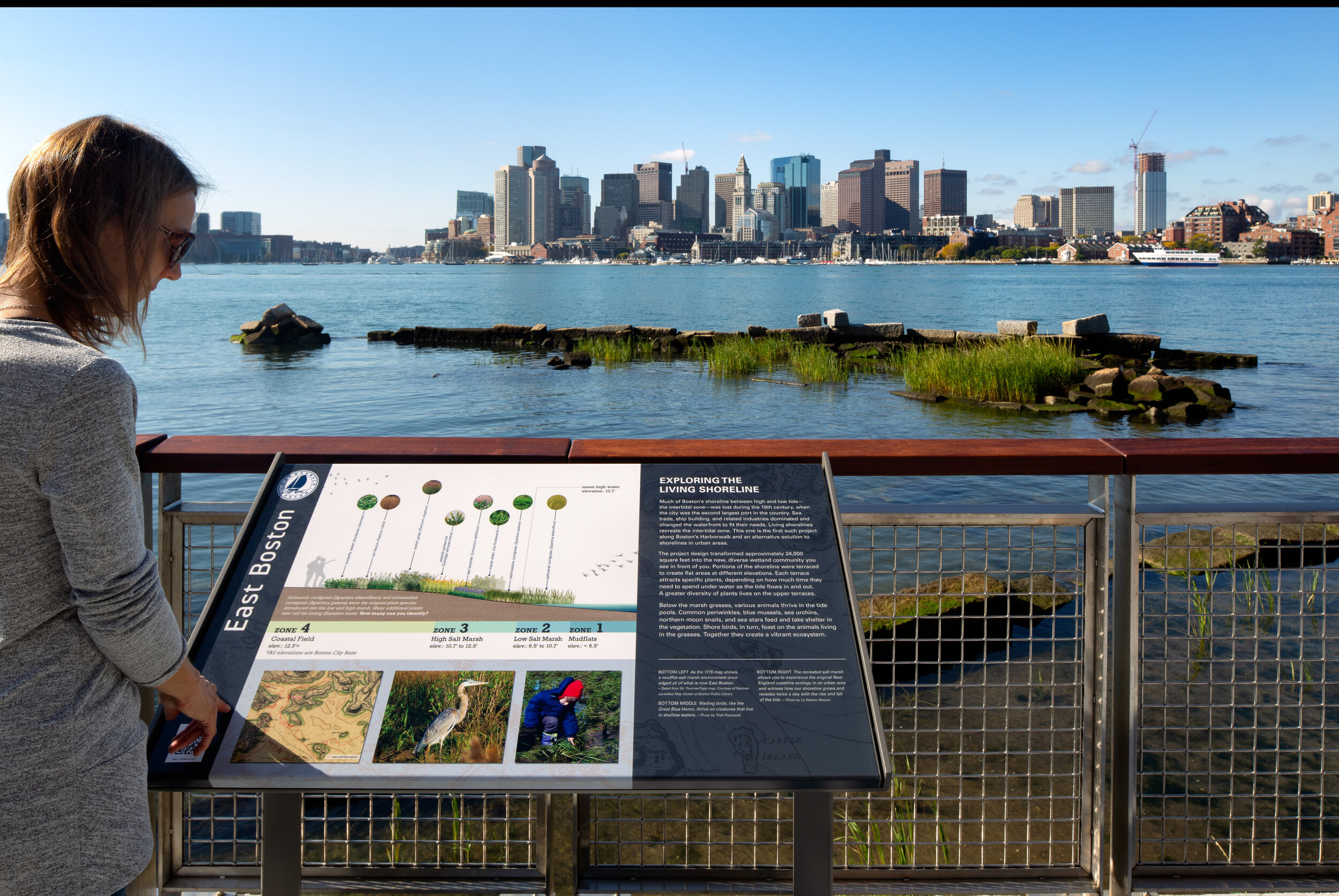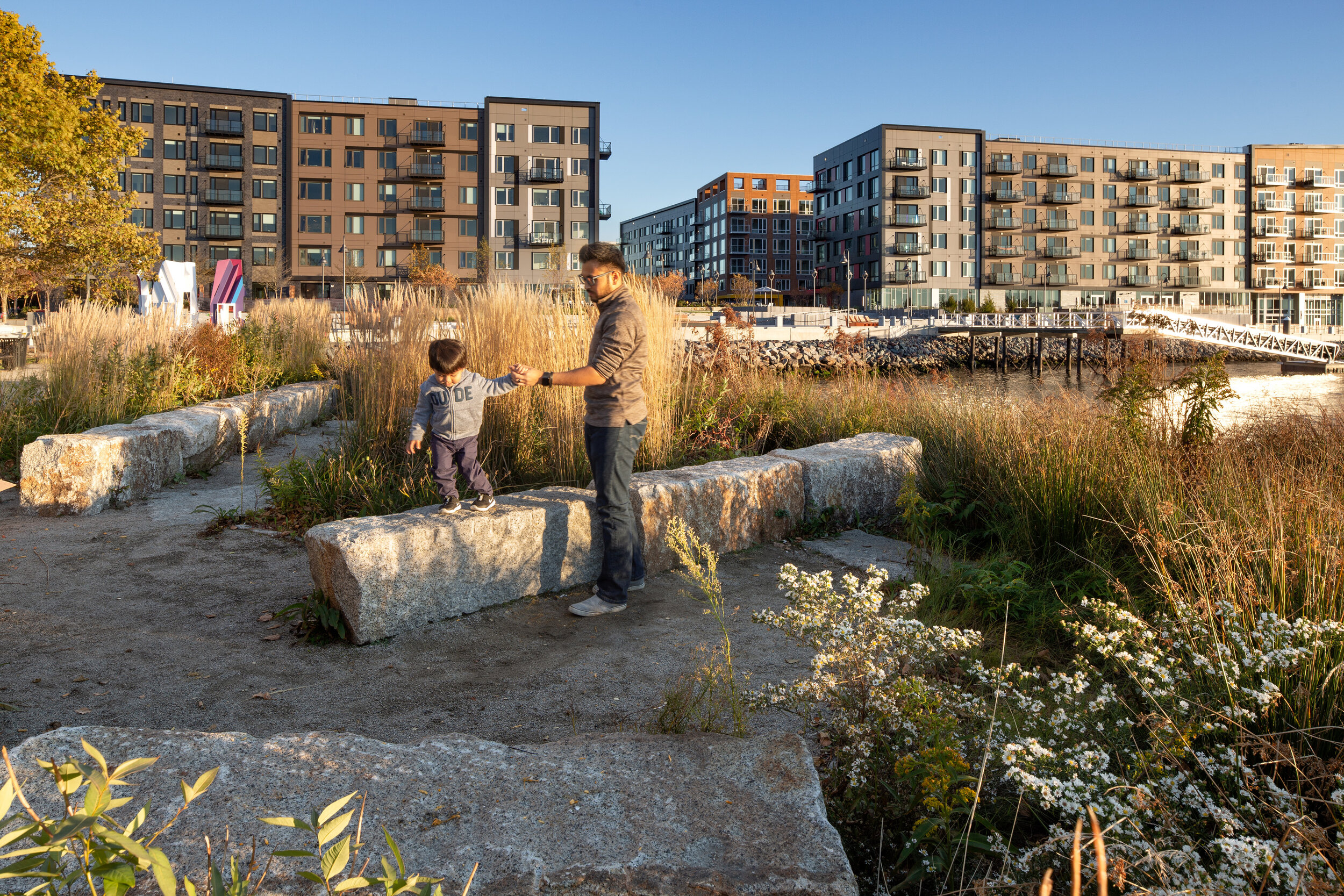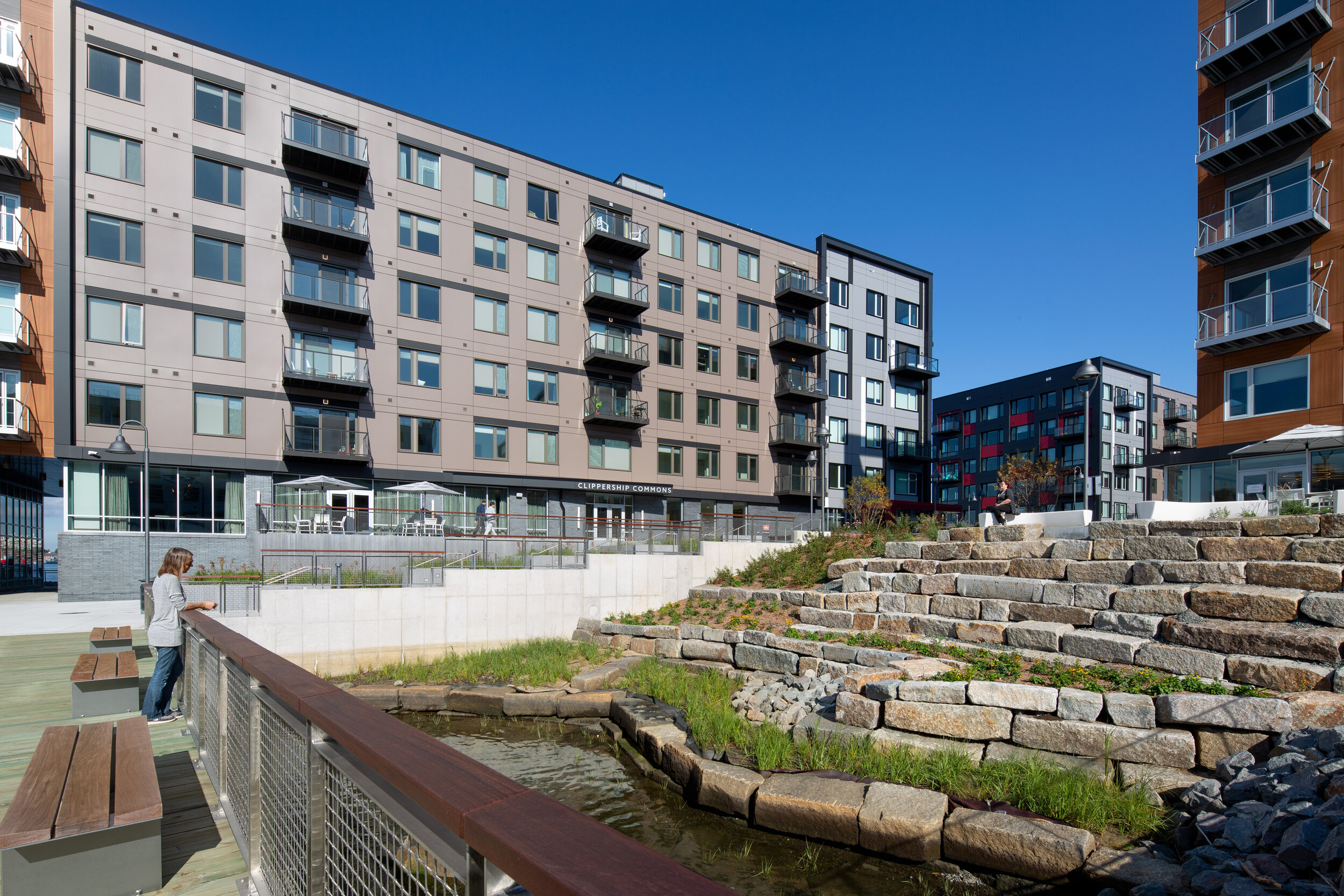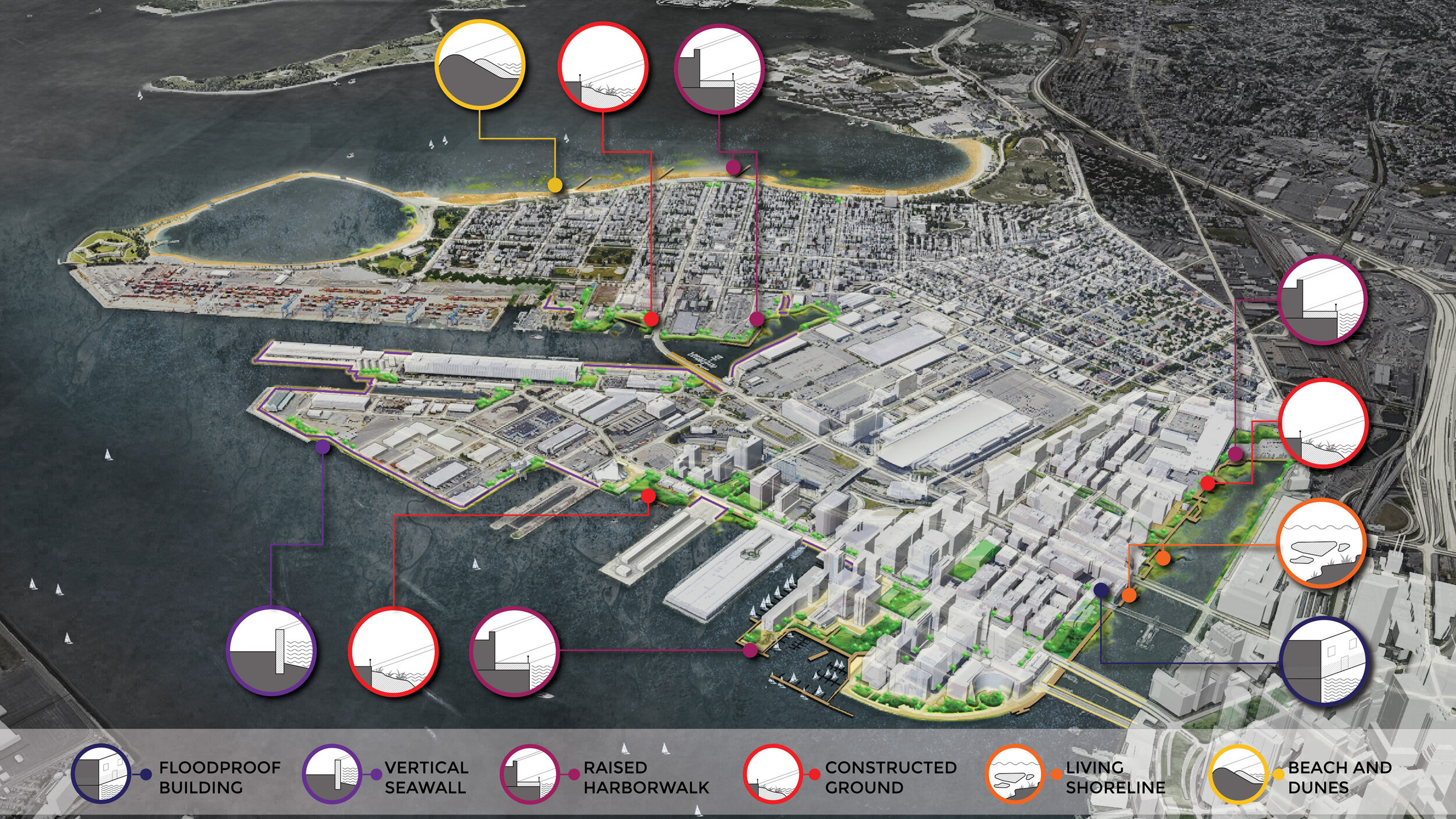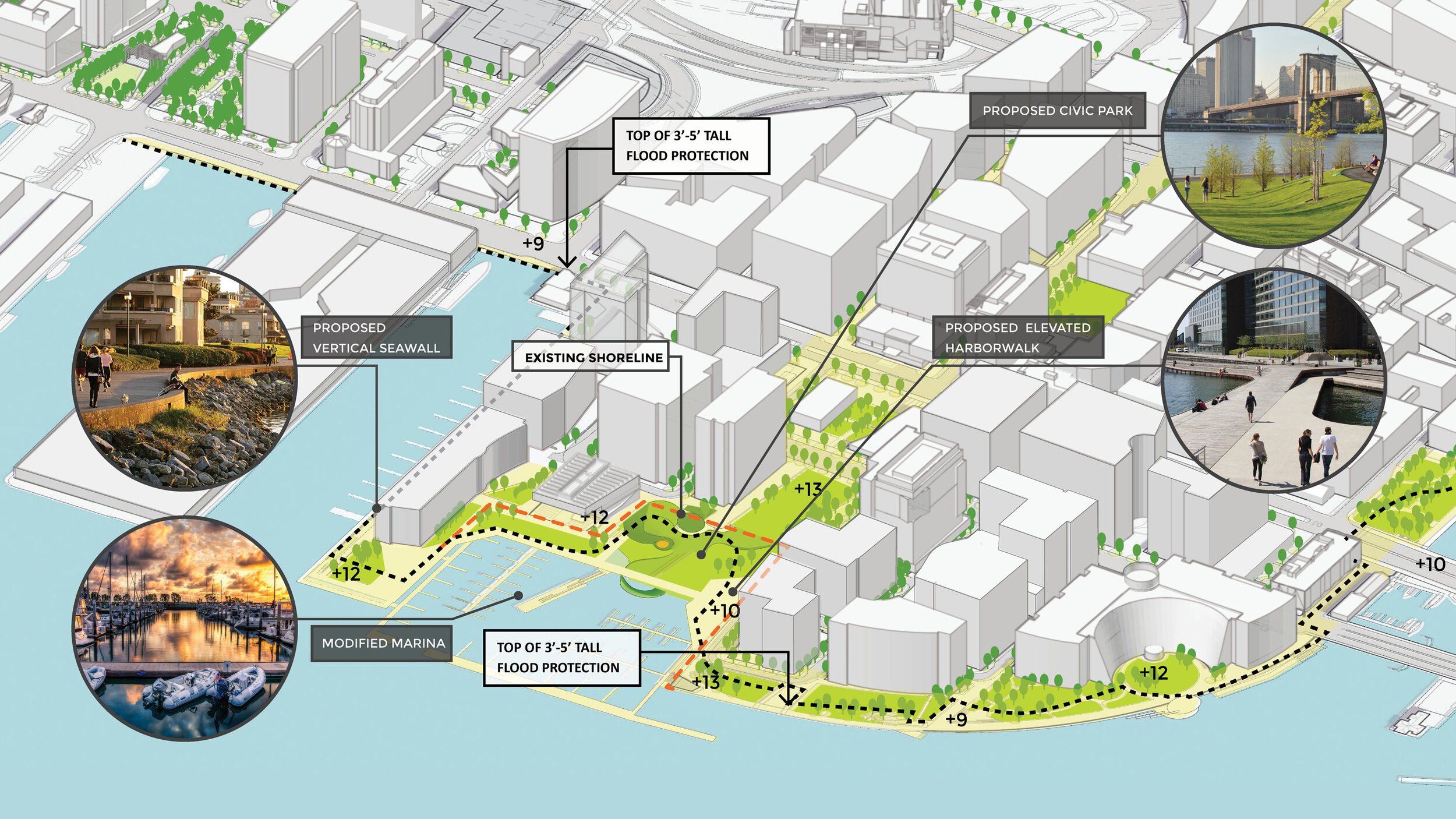Engineered and Landscaped Systems:
Working Together to Protect and Enhance Our Communities
As coastal and inland communities plan for and adapt to a changing climate, resiliency has become an area of major concern for many of our clients. Storms of increasing frequency and intensity are impacting the Northeast, putting lives and livelihoods at risk as they batter our shorelines, overwhelm waterways and stormwater systems, and cause millions of dollars in property damage. Across the region, private landowners, municipalities, institutions, and state and federal agencies are seeking resilient solutions to protect our communities and reduce the risk of catastrophic flooding and other damage from storm surges.
Historically, engineers have relied on structural solutions to manage water, building walls to separate it from the built environment and treating stormwater as a product to be moved away rather than as a potential resource. Despite being essential to the success of a project, the infrastructure tends to be hidden, inaccessible, and/or disengaged from the natural environment. These complex systems do their important jobs out of sight, and thus out of mind.
Over the past decade there has been a momentous shift in how municipalities, owners, and developers are approaching site design. Clients are recognizing the value in a multi-disciplinary approach and are seeking innovative ways to make their projects adaptable, resilient, and experiential. This has opened the door to a variety of opportunities to take infrastructure that was once hidden and bring it out into the open, to celebrate it, and to make it part of the tapestry of the of the place it serves. By revealing how a site functions, the benefits go beyond just moving stormwater or protecting the built environment. The engineering becomes part of the sustainable story, educating the public and working in concert with the landscape to enhance a space.
Tighe & Bond has long been involved in the hard and soft armoring of coasts—through seawalls, revetments, and living shorelines—as well as protecting critical infrastructure so that it stays functional during a storm. Our engineering and environmental expertise, combined with the skilled landscape architects and planners in our Boston office, Halvorson | Tighe & Bond Studio, give us a wealth of tools to create holistic designs that successfully protect and enhance a site, while unlocking its potential.
Applying Tighe & Bond’s Whole Asset Approach™ to site design, we are able to create inviting, adaptable spaces that serve more than a single purpose. Our highly skilled team of engineers, landscape architects, planners, permitting experts, and environmental scientists combine their expertise and unique perspectives to find creative ways to manage the adverse effects of severe storms and climate change while improving the ability of natural systems to provide resiliency. Our goal is to both protect and enhance our communities with an approach that provides the best total value.
An Investment that Yields High Returns
Building resiliency and sustainability into a project is an important investment that saves money in the long run. Too often, projects kick-off with the highest aspiration, to create a beautiful, sustainable, successful design that benefits our clients and enhances the fabric of the community. Despite everyone’s best intentions and noble goals, costs factor heavily into decision-making, and often the innovative gray/green systems and landscape enhancements that were used to generate excitement for a project early in the design and planning phase are the first to be scaled back.
The most visionary and successful projects are designed to be resilient, adaptable, and responsive to the needs of the communities they serve. Decisions that are made based not only on cost, but on the value a well-designed landscape adds to a project reap the most benefits for owners and the public alike. When one factors in the impact landscape has on how people experience a space and its marketability, the return is immeasurable. Simply building up a shoreline, riverbank, or other inland waterfront to protect the community isn’t enough anymore, nor is it a preferred long-term solution for a community. These vital pieces of infrastructure offer an exciting opportunity to create vibrant new open spaces—enhanced with seating, lighting, and native planting—that offer a sense of place, a welcoming spot to gather, an opportunity for recreation, or somewhere to relax and enjoy the view.
Views of the Clippership Wharf during low and mid-tide.
Our Whole Asset Approach to Site Design
Tighe & Bond knows the importance of addressing climate change factors that influence the effectiveness of design. We work collaboratively to develop meaningful and sustainable solutions to coastal resiliency, whether it’s leading the planning and assessment of hurricane barriers or using a living shoreline to prevent erosion and adapt to rising sea levels.
We are always asking; how will our design be resilient 100 years from now?
Through our Whole Asset Approach™, Tighe & Bond can address all aspects of a coastal or inland waterfront project—from wave and hydrologic modeling, marine and structural engineering, permitting, and construction administration to landscape design, placemaking, and outreach—by working with our in-house specialists, including all of the critical engineering disciplines, geomorphology, ecology, and many facets of environmental consulting. Our team of professionals provide coastal and inland resource delineation and permitting expertise and offer a hybrid of approaches that result in increased resilience to weather and climate impacts while benefiting the environment. We use cutting-edge software to assist communities in assessing risk and vulnerability by demonstrating different storm events and sea level rise scenarios to help our clients make informed decisions on the most effective infrastructure improvements.
Tighe & Bond’s projects include seawalls and revetments, outfalls, breakwaters and reefs, dredging and beach/dune nourishment, living shorelines, stormwater drainage, tide gates, levees and flood barriers, tidal turbines, marinas, boatyards and ship terminals, military and security facilities, waterfront parks, and public access facilities. With the addition of our new Boston-based landscape office, Halvorson | Tighe & Bond Studio, we bring an expanded skillset for integrating green and gray systems that not only protect our communities but also enhance our public realm.
Integrated Engineering and Landscape Design Takes Resiliency to New Heights
Halvorson | Tighe & Bond Studio approaches resilient design with an eye toward solutions that work in harmony with the environment and respond to the needs of the community to create a vibrant, thriving public realm. The landscape architects and planners in our Boston office bring a depth and diversity of experience in resilient design—ranging from coastal to inland solutions—and have partnered with clients and multi-disciplinary teams to develop adaptive measures that anticipate and respond to sea level rise and storm events, integrate solutions to mitigate coastal flooding, and explore district-wide resiliency solutions to further protect and enhance our communities.
As thought leaders in resilient design, Halvorson | Tighe & Bond Studio has completed numerous award-winning, resilient projects, including Senator Joseph Finnegan Park at Port Norfolk, recipient of the 2018 Excellence on the Waterfront Award; “Climate Ready South Boston”—developed with Arcadis and the Woods Hole Group and winner of the BSLA Merit Award for Analysis & Planning and 2019 APA-MA Planning Award; and Clippership Wharf, named 2020 Climate Resiliency Project of the Year by the Environmental Business Council of New England.
We understand the many ways landscape architecture can and should work in tandem with engineered systems to protect and enhance communities with solutions that serve a dual purpose. Together with our clients, Tighe & Bond strives to find a balance that provides safety, offers equitable access to the water, and maintains an active street-level experience.

